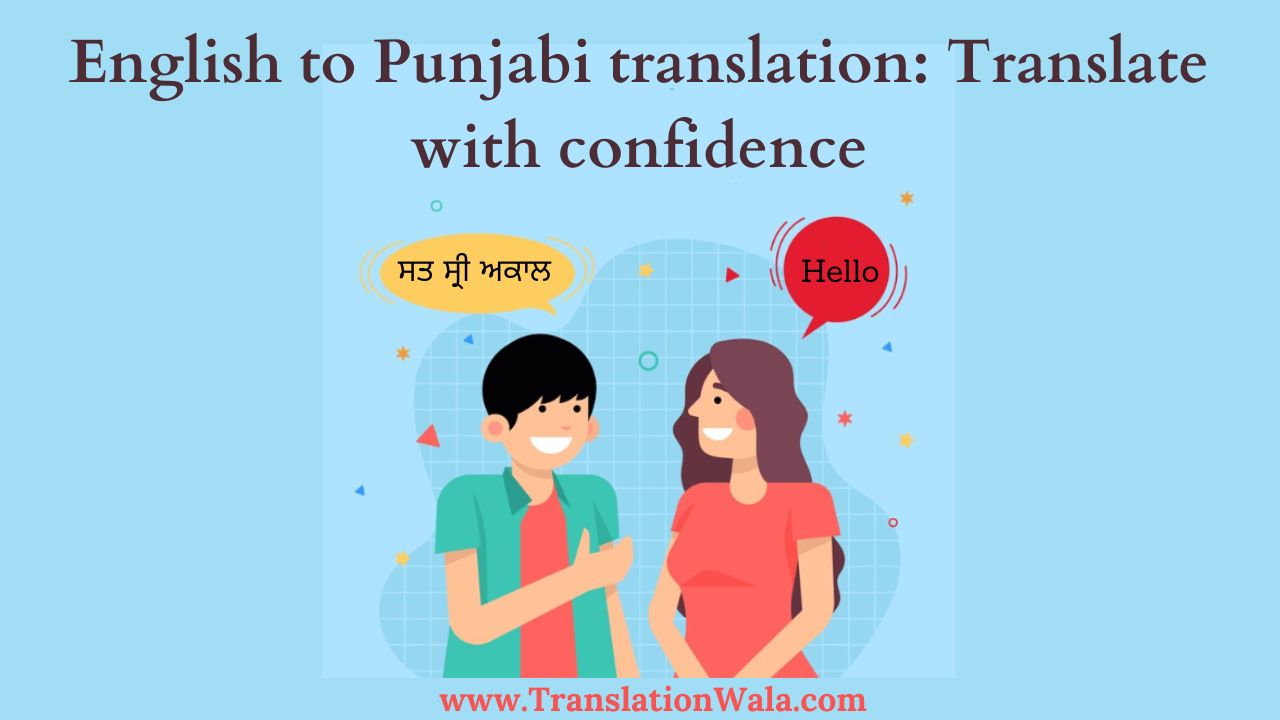Millions of people around the world speak Punjabi, a lively language with a lot of cultural and historical meaning. Getting in touch with Punjabi people and material often means crossing the bridge of translation. English to Punjabi translation with ease can help you find new chances and understand others better, whether you’re a student, a businessperson, or just someone looking to connect with others on a personal level.
The Need for Confidence: Challenges and Nuances
There are a lot of translation tools out there, but it takes more than just putting text into a machine to get from English to Punjabi.
- Cultural Nuances: Like any other language, Punjabi is full of cultural references, slang, and phrases that don’t seem to translate exactly. A translator who is sure of themselves knows these subtleties and makes sure that the translation is right for the audience.
- Formal vs. Informal: There are different official and informal forms in Punjabi that are necessary for good conversation. A skilled translator knows how to change the tone and style of a text depending on the audience and the situation.
- Dialects and Variations: Punjabi has many languages, and each one has slight changes in how it is spoken, what words it uses, and how it is put together. A translator who is sure of themselves knows these differences and chooses the best one for the job.
- Technical Accuracy: It is very important to be accurate when writing technical papers, legal contracts, or medical reports. A translator who is sure of themselves knows enough about the subject to make sure the translation accurately conveys the meaning.
Also Read: Making Sense of Tamil Text: English to Tamil Translation for Research
Building Confidence: Strategies for Success
So, how can you be sure that your English to Punjabi translation is correct? Take a look at these strategies:
- Invest in Learning: Learn the basics of Punjabi language, words, and cultural references. Apps, websites, and language classes that you can take online can be very helpful.
- Utilize Trusted Tools: Use onlne translation tools or hire a professional service, but keep in mind that they aren’t 100% accurate. Use them as a starting place, and then compare what they say to what you know.
- Seek Native Feedback: A local speaker of Punjabi should look over your translations. Their opinion can help you figure out cultural differences and where you can improve.
- Practice Regularly: The key is to practice regularly. Regularly translate short texts, stories, or talks to get better and feel more confident.
- Embrace the Journey: It takes time and hard work to learn a language and translate. Enjoy the process of learning about other cultures, remember to be proud of your growth, and see problems as chances to learn.
Beyond Words: The Power of Translation
It’s not just words that are translated from English to Punjabi. It’s about bringing people from different cultures together, helping them understand each other, and making real relationships. How to do it:
- Business and Commerce: Translations that are correct can help with foreign business, relationships, and advertising.
- Education and Research: Sharing study and information across language boundaries helps people work together and make progress.
- Personal Connections: Being yourself when you speak someone’s native language strengthens relationships and increases trust.
- Cultural Exchange: Correct interpretations protect cultural artifacts and help people from different groups understand each other better.
Also Read: Bridging Cultural Connections: English to Telugu Translation for Personal Interactions
Conclusion: Translate with Confidence, Connect with the World
You can feel more confident in your ability English to Punjabi translation, if you know what the problems are and how to solve them. This opens up a lot of doors for you, making your personal and work life better. Don’t forget that translation is a process, not a goal. Enjoy the process of learning, be proud of your growth, and feel free to use your new skills to connect with people around you.
